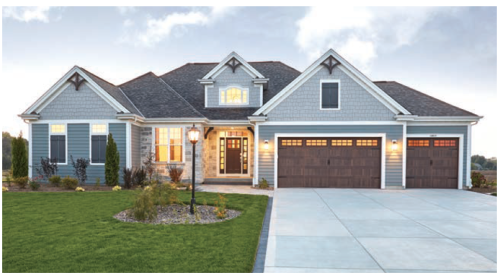It will happen one day. Maybe it already has. A technology consultant will conduct a review of your systems and suggest a company-wide replacement of hardware and software. Try not to listen, even though the thought of fixing everything at once is seductive.
The experience of hundreds of organizations where such a feat has been attempted is testament to the debilitating inefficiencies that often follow a start-from-scratch approach to upgrading technology. Murphy’s Law - whatever can go wrong, will go wrong - applies doubly when it comes to computer upgrades. New equipment and software is superior to old, but team members invariably encounter difficulty keeping all the balls in the air while operating in a new environment.
The incremental approach, most experts agree, is a better way to go. Target a single operational area in need of a computer retooling, then find ways to grow and adapt your current system to meet new goals. p>"Once you have an operating company and a system in place, you can’t just blow out of that system. The downside is too big," says Noelle Tarabulski, president of the technology-consulting firm Builder Software Tools and a PB columnist.
"The question is: How do you evolve from a sunk-cost kind of system, with many man-hours of knowledge, and transition it into modern, sleeker code that manipulates data faster?"
One believer in the gradual approach is Ken Neumann of GIANT Nuemann Homes in Chicago.
"Irrespective of the software package you lease or buy, you have to take a single area of your business and transform it technologically," says Neumann. "Then you move on to the next area."
Another gradualist is George Casey, president of GIANT builder/developer Arvida, Boca Raton, Fla. He points to solid results after a three-year, step-by-step restructuring of its back-office system, but only as it relates to the company’s options business. According to Casey, options are now a profit center for the company. In 1998, Arvida sold about $13,000 in options per home. In 2000 that figure was $31,000 per home and continues to climb. More importantly, says Casey, options have become a source of customer satisfaction when, not long ago, the reverse was true.
The Arvida Story
| Bill Petkoski, VP of Construction Services and Pamela Dalziel-Cort, the design gallery manager are key players in Arvida’s revamped options business. Both are also members of the options committee.
|
Coming to Arvida in 1997, Casey inherited an organization that built about 900 homes per year. Its roots are in land development and about a decade ago it launched a home building unit to take advantage of strong land positions. The town of Weston, Fla., for example, located 20 miles west of Fort Lauderdale, began simply as a large master-planned community that was entitled for 17,000 homes by Arvida in the 1970s. Today, the company is still building there, but within a few years it will be completely built out. One of Casey’s challenges was how to maximize profit on the few thousand homes left to be built in Weston.
"If you think about it in terms of an airliner, I only have so many seats I can sell, then I can’t sell anymore," explains Casey. "So the question was how to optimize the profit per seat. I chose to focus on options."
Not only did options represent an opportunity to "optimize" profit per home, but to Casey, it was also the source of a number of operational issues needing fixing. First among the problems was a declining level of customer satisfaction. Survey figures varied widely based on where the buyer was in the sales process. At contract signing, satisfaction was consistently higher than 95 percent. After closing and into the warranty period, satisfaction slipped below 70 percent. The message was clear, explains Casey. "The longer the buyer was with us, the more we ticked them off."
A second issue was the company’s abysmal record of building options correctly the first time. If a return visit by a technician or trade after closing counts as a defect, says Casey, "We had a 100 percent defect rate."
Ironically, the previously flawed options program at Arvida was the result of a mandate from management to increase customer satisfaction. In response, sales staff adopted a ‘give the buyer what they want’ approach that soon became part of the company’s culture. To make buyers out of prospects, salespeople moved walls or ordered appliances from outside vendors at the drop of a hat. Not surprisingly, this became hell for Arvida’s field personnel. A typical sales agreement left plenty of room for confusion. Buyers expect a half-wall and contractors frame a full wall. Sales reps agree to a Sub Zero refrigerator and spend extra time on the phone with the vendor arranging delivery and payment. Invariably, the customer-specified ceiling fan was the wrong model or the requested window was not the right one. These mistakes were later rectified at Arvida’s cost.
In 1997, "we sold $11.7 million in options and my guess is that we were doing it for fun," says Casey, noting the bottom-line impact of the callbacks.
The last link in Arvida’s gradual drift toward unprofitable custom options centered on a computer system that failed to bring any logic to the situation. According to Casey, there was no central, organized way, of naming and describing options between business units within the division. Designers and sales personnel in various locations were creating dozens of new custom options. In most cases, the method of creating new options was the same—log on to the network, choose an option from another floor plan, amend it, and copy it over to all the other floor plans where they wanted to sell it. Going back to the ceiling fan example, a two-speed Hunter brand model was put into the system several different ways, varying from floor plan to floor plan. It was a recipe for the kind of operational discrepancies that later resulted.
Orchestrating a Solution
The step-by-step process to change the back-office technology controlling the options program at Arvida took three years to complete. From a purely technological point of view, the length of time is misleading. The technology change, which only involved writing new software, took a matter of months, says Tom Kuzma, director of information technology for Arvida.
"Our solution was to create options at a global level and then map back to them, instead of creating an option at the detail, or floor plan level," says Kuzma.
Arvida relies on a computing platform that was built 10 years ago - IBM servers, proprietary operating software and an off-the-shelf J.D. Edwards accounting package. Its virtues, says Kuzma, are an open database architecture that can be adapted to new and unforeseen uses. The most important such unforeseen change was made at the company several years ago. Again, in the interest of better serving the buyer, the home building division was segmented into three operating units. Business units One and Two cater to first time and move-up buyers, respectively. The third unit serves buyers at the upper end of the market.
When the business units split up, the respective options databases were copies of each other. But, as no effort was made to keep them synchronized, each evolved differently. What was needed, says Casey and Kuzma, was a single options naming convention with consistent descriptions across all business units and all floor plans. Kuzma and his IT team, with the help of consulting programmers, quickly wrote the required code to handle these changes. Concurrently, plans for larger and more time-consuming organizational changes were made and executed.
Tarabulski and a multi-disciplinary working group created within Arvida began making headway on the options naming system in Microsoft Access. They developed a common way to number and describe each option so that sales reps, buyers and field personnel would speak the same language. They also looked at each existing option from the business units and rationalized them to fit within the new naming convention.
Hundreds of options were considered and the work was slow going. On completion, Kuzma and his IT team wrote a software bridge to the Microsoft Access database for the one-time purpose of bringing the newly homogenized options into the old system. The old J.D. Edwards-based system had also been updated with new information fields and a new set of query tools to aid in the generation of a host of new reports.
A New Storefront
| George Casey, president of Arvida’s southeast Florida division, led a transformation of the builder’s options business.
|
With a newly centralized system in place, it fell to Arvida’s multi-disciplinary committee to select options on an ongoing basis. This group began work in earnest in September of 1999 and they continue to meet every other week, voting to bring new options into the system. So far, about 800 different options have been approved by the committee, with some, like granite countertops, now available in all three business units. Others are exclusive to specific neighborhoods. According to the option group’s leader - Arvida’s vice president of construction services, Bill Petkoski - the criteria for assessing new options is potential sales velocity and ensuring that new options pose no undue burden on the construction team. A good example is the reasoning behind the group’s decision not to offer solid-wood front doors. "Our warranty department warned it would be a nightmare with the humidity in South Florida," Petkoski explains. "And from a production standpoint, there was a question of who would stain them."
The construction of a new 8,000 square foot design center in Weston was the final step in the process, says Casey. With the options data centralized within the computer and a standing committee in place to control the system, it was time to put a new face on what they had accomplished. Previously, buyers met with design counselors in a conference room where tile samples, faucets and other options were displayed. Today buyers browse options in bathroom and kitchen vignettes.
Importantly, the design center is a storefront that is perfectly in sync with its back office. If Casey decides to institute a one-percent, across-the-board price increase on options, the change can be made in a matter of hours. A few keystrokes to a master pricing-table enables a change in options on every floor plan in the system. The timetable for such a change used to be measured in weeks.
Since these changes were fully implemented more than 12 months ago, buyers have responded. Customer satisfaction starts high and never wanes.
"Before, satisfaction basically declined," says Casey. "Now it is a flat line at 95 percent."
Also See: Lessons Learned
Home on the Web












